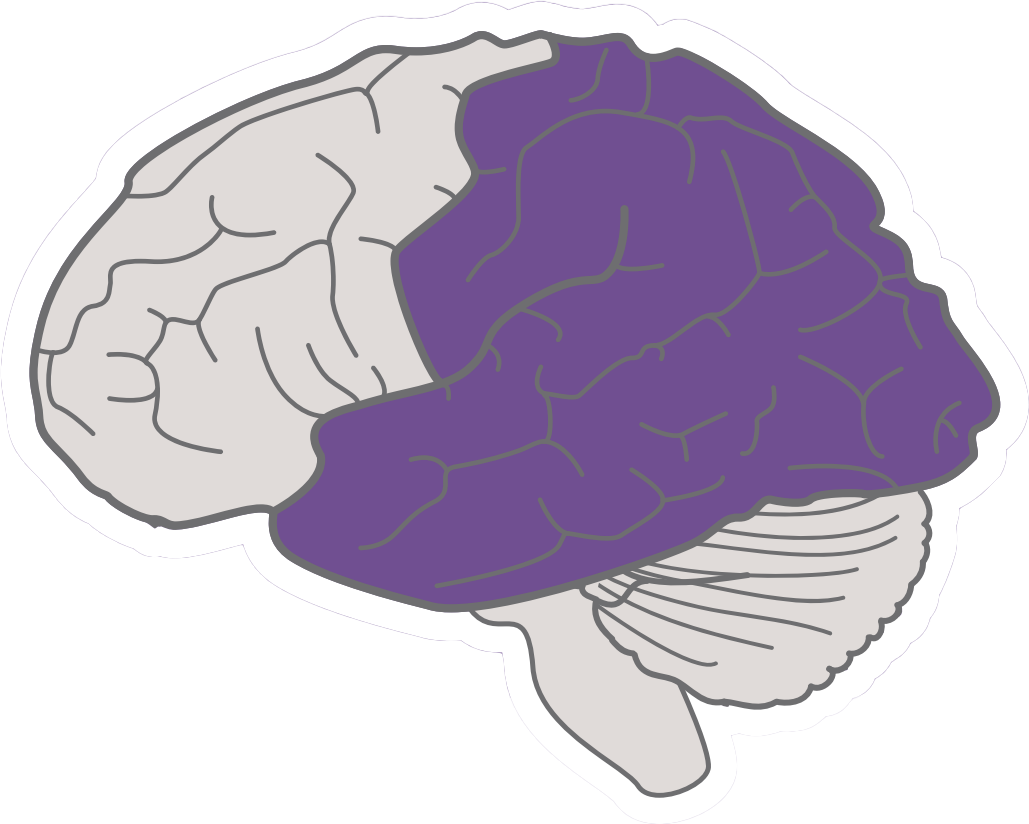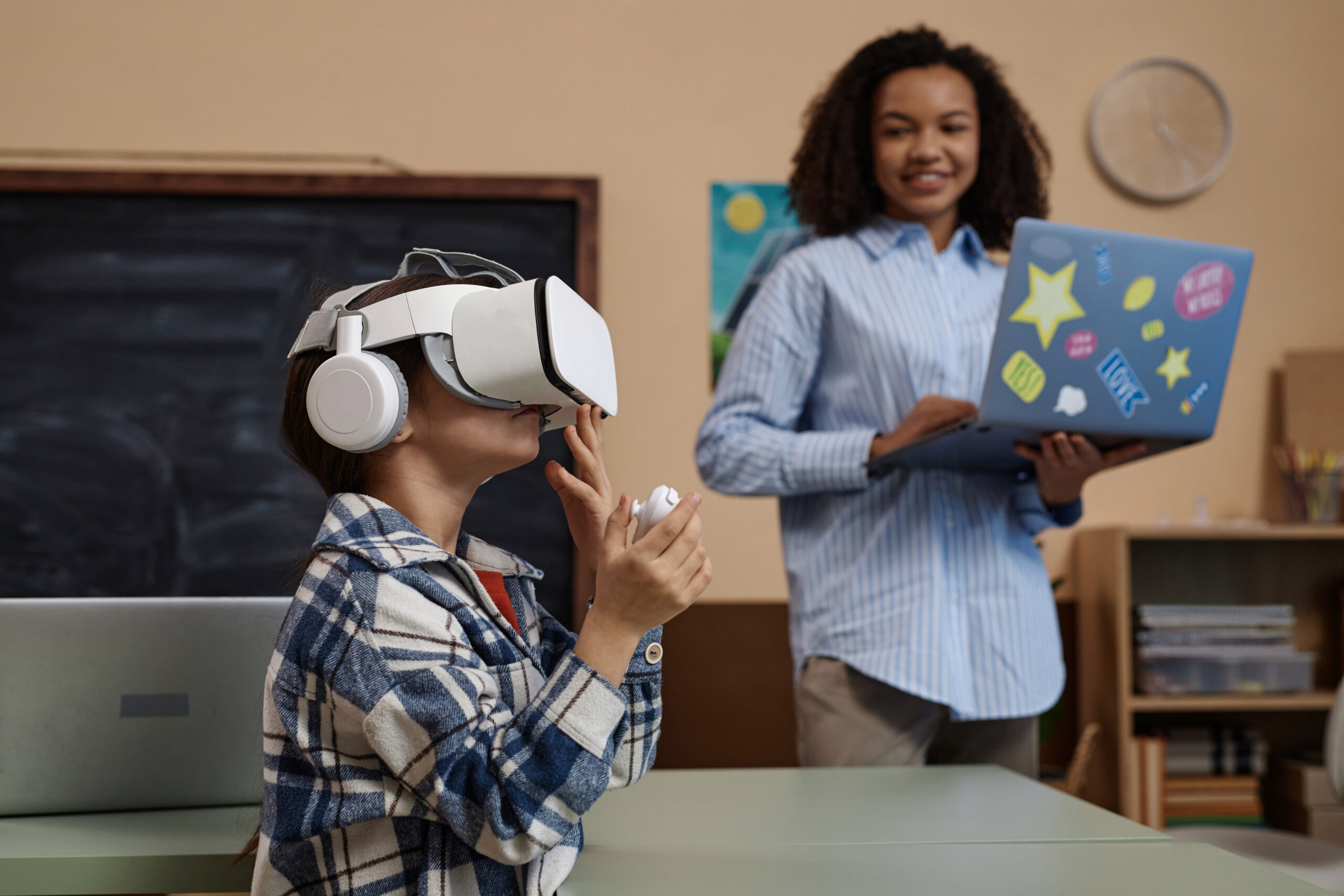Listen to a discussion about this blog
Remember that shiny new VR headset you were so excited about? The one you thought would magically transform your classroom into a hub of interactive learning? Well, if you’ve already experienced the frustration of watching your students wander aimlessly in a virtual world, you’re not alone. In our previous posts, we have stressed the importance of well designed VR experiences for students. Today, we’re diving deeper into one crucial aspect: navigation.
Carreon et al. (2024) highlighted the importance of clear and intuitive navigation in VR environments. It’s not enough to simply create a visually appealing virtual world; students need to be able to find their way around without feeling lost or overwhelmed. While it might be tempting to think we are talking about accessibility. Actually, we are more focused on availability. Accessibility often refers to things that are sensory or physically available. What we want to ensure, is that the learning experience and how it was designed is available to the cognitive elements of the person. Do they understand what they are expected to do? Do they understand what the various features of the virtual tool are to be used for and what they the student is to do with them? And the questions go on. Let’s explore some strategies for creating VR experiences that are easy to navigate, promote successful learning, and overall, are designed to be available to the needs of the user..
Guiding Lights in the Virtual Wilderness
Think of your VR environment as a vast, uncharted territory. Without proper guidance, your students are bound to get lost. Left to figure things on their own, our students may drift through the virtual environment, heading down one rabbit hole after another. We might be tempted to conclude that they are engaged in the learning and yet, oftentimes they are simply moving through the virtual environment checking this and that out but not using the virtual learning experience as it was designed. Here are some essential navigation tools to consider:
- Visual Cues: Arrows, maps, highlighted objects, and interactive guides can act as signposts, pointing students in the right direction. They visually cue students and reinforce this is what is expected to do be used.
- Audio Prompts: Voiceovers, sound effects, and text-to-speech options provide additional guidance, especially for students who may struggle with reading or visual processing. Often, the audio supports might require the user to click on an audio tool. In so doing, the visual and the accompanying audio offers the directions, supports, and b asic navigation the user requires.
- Progress Tracking: A visual representation of progress, such as a progress bar or a map with completed areas marked, helps students stay on track and feel a sense of accomplishment. Think of those ,long car trip where you or your children are asking the question, “are we there yet.” The progress tracker visual tells the user where they are in the simulation, where they have been, and what is left in their journey.
Learning from the Gaming World
Don’t reinvent the wheel! Many popular video games have mastered the art of intuitive navigation. Borrow elements like mini-maps, quest markers, and clear objectives to create a familiar and user-friendly experience for your students. The VOISS project recognizes this connection, incorporating game-like elements and interactive features to enhance student engagement and facilitate seamless navigation within the virtual environment. The key here is initiative and purposeful design. When the user is not sure what to do, they often look for visual or audio tools to support them in what they are to do next. Design features embedded for this purpose are critical in ensuring the virtual learning tool and the environment are available to the user making the tools practice to understand and thus, use.
The UDL Connection
Yes, we are discussing purposeful design through frameworks like Universal Design for Learning. Effective navigation in VR aligns perfectly with the Universal Design for Learning (UDL) principle of providing multiple means of representation. Above, we suggest both visual and audio prompts to ensure the learner is able to understand what they are to do in a given part of the simulation. Instead of written directions, a barrier for our struggling readers, the visual and accompanying audio supports ensure our learners with learning disabilities, autism, intellectual disability and associated learning challenges have the necessary tools personalized to their needs. By offering various ways to foster understanding and in turn, navigate the tool, we can ensure that all learners can engage with the VR environment. As Carreon et al. (2024) suggest, aligning VR design with UDL principles is crucial for creating inclusive and effective learning experiences.

Stay tuned for our next post, where we’ll explore the crucial role of motivation in creating successful VR learning experiences!
Carreon, A., Rowland, A., Smith, S., Lowery, A., & Mosher, M. (2024). Designing for Successful Educational Experiences in Virtual Reality Environments. Journal of Special Education Technology, 0(0). https://doi.org/10.1177/01626434241277191

